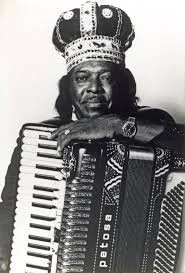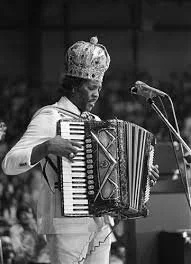Exhibits
Visitors to the New Orleans Jazz Museum have access to a series of rotating exhibits on themes relating to jazz history and culture. Current exhibits include: ‘Congo Square to the World: Early Jazz in New Orleans’, ‘It All Started In Jane Alley: Louis Armstrong in New Orleans’, ‘ ‘Drumsville: Evolution of the New Orleans Beat,’ ‘The District: The Music and Musicians of Storyville, ‘Shake Your Hips: Louisiana Blues’, and ‘Face Value: The Illusions of Power and Money.’ With listening stations, instruments, photographs, artwork, and more, each exhibit is intentionally designed to personally engage each visitor. All exhibits listed are open to the public.
The District: The Music and Musicians of Storyville
On Thursday, November 13, the New Orleans Jazz Museum will unveil its newest exhibition, The District: Music and Musicians in Storyville.
This immersive exhibition explores the vibrant musical culture that thrived in both Storyville and the neighboring area known as Black Storyville. Through a rich collection of photographs, artifacts, interviews, and video, The District examines the music and musicians who animated these legendary neighborhoods.
While the notion that jazz was born in Storyville is more myth than fact, there is no doubt that the district played a vital role in shaping the early sound of the genre. Music filled the cabarets, saloons, and brothels of Storyville and Black Storyville.
Visitors will encounter rare images of the music clubs and parlors where early jazz pioneers such as Jelly Roll Morton, King Oliver, Tony Jackson, Kid Ory, and Fess Manetta performed. Among the highlights of the exhibition are two iconic artifacts from Lulu White’s Mahogany Hall—the long-awaited carriage stone and stained glass window—on view for the first time in many years.
A new video installation will bring the district to life through dynamic recreations of the dances that once accompanied this bold and transformative music. The Storyville Museum has also generously loaned several historic pieces, including the mantelpiece from Hilma Burt’s famed establishment, further illuminating the atmosphere of an era that shaped the course of American music.
The King at 100: Clifton Chenier
Clifton Chenier, the King of Zydeco, defied description. A French-speaking Afro-Creole from southwestern Louisiana who could play blues and French songs for four hours without a pause—who would believe that? Yet it was true, and Chenier was one of the pioneering musicians from whom all that music grew. Born near Opelousas, Louisiana, in 1925, he grew up working on his sharecropper family’s farm. His father played accordion at home and at local dances known as fais-dodos. Several of his relatives were musicians, and they played Creole la-la music.
Chenier’s musical influences included early Creole accordionists Amédé Ardoin and Sidney Babineaux, as well as the jump blues of Louis Jordan. He and his brother Cleveland, who took up the washboard, started playing dances in the late 1940s. Chenier worked at Louisiana and East Texas oil refineries, but after losing his job in the 1950s, he began playing on the Gulf Coast chitlin’ circuit—venues that catered to African American audiences.
One of the innovations of Clifton’s band was the frottoir, an instrument that evolved from the washboard, a household item long used for percussion in traditional bands. He and his brother Cleveland came up with the idea for a washboard that hooked over the shoulders, and they got a metalsmith to make it. According to legend, they sketched the design in the dust on the street outside the metal shop.
Clifton Chenier started recording in 1945 for Elko Records with “Louisiana Stomp” and “Clifton’s Blues.” These are some of the first examples of zydeco music. Chenier combined the French Creole music he heard as a child with rhythm and blues to create a whole new, driving dance music.
IT ALL STARTED IN JANE ALLEY
Louis Armstrong in New Orleans
The New Orleans Jazz Museum unveiled a new permanent exhibition, It All Started in Jane Alley: Louis Armstrong in New Orleans, on August 1, 2024, ahead of Satchmo SummerFest. The exhibition delves into Armstrong’s early life, including key influences such as his mother Mayann, the Karnofsky family, his music teacher Peter Davis, and his mentor Joe “King” Oliver. Through photos, artifacts, and stories, the exhibit illustrates Armstrong’s upbringing in New Orleans and the pivotal role the city played in shaping his identity and career.
Armstrong grew up in a poor section of New Orleans known as Jane Alley, and despite his international fame as "Satchmo," he maintained a simple life in a working-class neighborhood. His influence as a founding figure of jazz is unparalleled, and his connection to New Orleans remained deeply personal throughout his life. The exhibition captures Armstrong’s enduring bond with his hometown, highlighting the lessons he learned there about music, people, and life, which he carried with him throughout his global journey.
Congo Square to the world
People take it for granted that Jazz, the music known and loved the world over, started in the Crescent City. But how and why? Scholars, musicologists, and musicians have wrestled with the answers to those questions for a century. In this exhibit, Congo Square to the World; Early Jazz in New Orleans, the New Orleans Jazz Museum makes its case for why and how Jazz developed here with instruments, photographs, recordings, sheet music, and other artifacts from its 50,000 piece collection. Early jazz musicians such as Charles “Buddy” Bolden, Freddie Keppard, Jelly Roll Morton, Edward “Kid” Ory, and Joe “King” Oliver came up playing this music due to the unique aspects of life in New Orleans. In the first section, “Roots of Jazz,” the exhibit considers the social and musical branches that contribute to the tree that is New Orleans Jazz. From Congo Square where enslaved people and free people of color met to dance and drum to the thriving international port of New Orleans to the widespread and varied musical culture of the city, jazz came out of that. As the music developed in hall and taverns across town including both the notorious Storyville and Black Storyville, it became the sound of the city and people in it. And as New Orleans changed at the end of the 1910s and African-Americans fled the oppressive Jim Crow segregation laws, more musicians such as Louis Armstrong, Warren “Baby” Dodds, and the New Orleans Rhythm Kings took the music they learned here and brought it north and west. By 1917 when the Original Dixieland Jazz Band recorded the first jazz record (after Freddie Keppard refused because he didn’t want people to steal his music) “Livery Stable Blues,” the music that started in the back of town bars and parades in Central City and Treme New Orleans was poised to become the soundtrack of the Jazz Age.
SHAKE YOUR HIPS! LOUISIANA BLUES
Although Louisiana is most known musically for Cajun, zydeco, and, of course, jazz, its rich blues tradition often goes unnoticed, or worse, is ignored. Shake Your Hips: Louisiana Blues is the first comprehensive museum exhibit that tells the complex story of Louisiana blues and sets it in the larger context of the American music tradition.
The many forms of Louisiana blues have been shaped by and reflect the state’s geography, history, and regional differences in culture. Blues from New Orleans has been and continues to be influenced by the city’s ultra rich jazz scene, while blues from southwest Louisiana gains influence from both zydeco and Cajun music styles. And Baton Rouge is one of the unsung American centers for blues music.
Shake Your Hips: Louisiana Blues includes never-before-seen artifacts, multi-media displays and new interviews with Louisiana blues greats, in the process finally giving due to another great Louisiana music tradition.
DRUMSVILLE: EVOLUTION OF THE NEW ORLEANS BEAT
Check out our Drumsville exhibit on Google Arts & Culture
The New Orleans Jazz Museum debuted Drumsville: Evolution of the New Orleans Beat on November 8, 2018, in celebration of both International Drum Month and the New Orleans Tricentennial, along with the development of the drum kit in New Orleans and the ongoing evolution of rich local drumming traditions. Drumsville begins with the legacy of Congo Square, including traditional African percussion instruments from the Southern University at New Orleans African Art Collection, and moves through the brass band tradition to the introduction of the bass drum pedal and development of the drum kit and the extensive legacy of drummers to emerge in New Orleans over the past century. Drawing upon the Jazz Museum’s large and unique archive of historic instruments, drum kits and equipment are featured from such New Orleans legends as Papa Jack Laine, Baby Dodds, Paul Barbarin, Louis Barbarin, Cie Frazier, Ray Bauduc, CoCoMo Joe Barthelemy, Earl Palmer, Idris Muhammad, Zigaboo Modeliste, and James Black. In addition, contemporary New Orleans drum masters Johnny Vidacovich, Herlin Riley, Shannon Powell, and Stanton Moore generously loaned equipment from their personal collections. Drumsville examines related traditions of improvised percussion instruments and the tambourine, and concludes with the next generation of drummers, testifying to the vibrancy of the city’s drumming tradition.
“…Heads you Lose” coin - a double-headed fine silver coin for the year 2020. This coin speaks to the tools of the trade for a trickster, like a gambler’s stacked deck, this is a dishonest object for a post-truth culture. This coin illustrates how Patriarchal culture has gamed the system forever.
FACE VALUE: THE ILLUSIONS AND POWER OF MONEY
A solo exhibition by Generic Art Solutions (artists Matt Vis & Tony Campbell). Housed in the coin room, the Old Mint in New Orleans was active from 1839 to 1909, and is the only US Mint to strike coins for both the United States of America, for a succeeded Louisiana, and for the Confederacy.
Displayed side by side with coins minted in this historic facility, the artists have “minted” new coins for this exhibition. The intention of the show is to explore the tropes of wealth and influence and probe the promise of an American Dream and the gambler’s persistent belief in his luck. This exhibition examines the power structures surrounding money and our trust in those institutions. Our relationship to money is complex and currently volatile. This abstracted system of trade the world over is adrift from the gold standard, often merely a digital token divorced from the soon-to-be antiquated hard currency, thus demanding ever more blind trust in the legitimacy of the said economic system.
“The Money Jukebox.”
A fully functional Jukebox loaded with 7” disks featuring Money-themed songs. With this ongoing project, we have encouraged artists to make a famous “money “ cover version or a self-penned original on a 7” vinyl record, to be housed in our custom Jukebox. The collection will examine the long and complex relationship that Southern music and culture have with money. We would feature all the local genres of music, Ragtime Jazz, Blues, Country, Hip Hop, Bounce, Rock, Punk, Zydeco, Swamp Pop. Etc.
“…Heads you Lose” coin
“Louisiana Landfall”
A customized coin pusher arcade game. This interactive sculpture addresses ecological losses in Louisiana, namely the drastic coastal erosion of the state’s wetlands. The United States of America continues to gamble with global warming and the climate crisis and is experiencing a long losing streak. This artwork entices the audience to mirror this irresponsible behavior for similar financial gains.
“The Money Jukebox.” A fully functional Jukebox loaded with 7” disks featuring Money-themed songs.
“…Heads you Lose”
A double-headed fine silver coin for the year 2020. This coin speaks to the tools of the trade for a trickster, like a gambler’s stacked deck, this is a dishonest object for a post-truth culture. This coin illustrates how Patriarchal culture has gamed the system forever.
“Louisiana Landfall”













